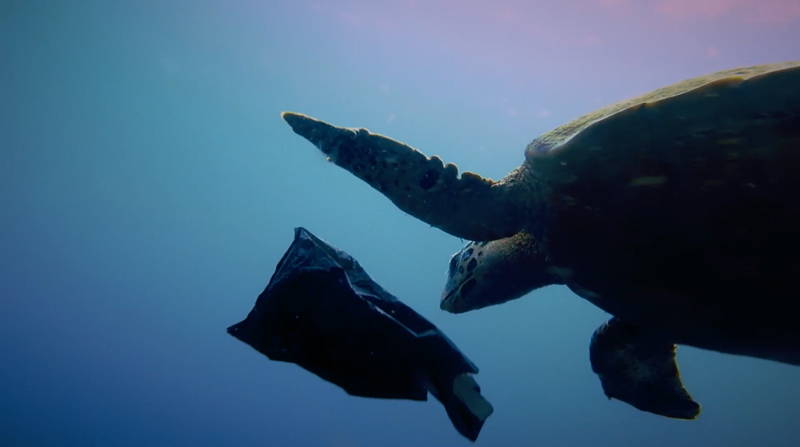**This article has been translated automatically and contains French/Quebec references.**
Today we live in a world where packaging is omnipresent.
Choosing better packaging in 3-4 easy steps?
How, as a business or consumer, can we minimize their impact on our environment?
It is a documentary which serves to raise everyone's awareness of the nature of packaging, their function and their impact depending on their material. It can be listened to online for free.
This blog article was inspired by it, you will also find some passages and photos there.
“It is estimated that the equivalent of a truckload of packaging is dumped into the ocean every minute. This packaging, used only once, degrades slowly and is found everywhere in microparticles. They enter the food chain. Plastic particles have been found in our beer, our honey and even in our blood. »
PACKAGING PROBLEMS
One of the problems with packaging is that you don't really notice it anymore. We are no longer aware of it or we say to ourselves: meh... no choice.
It is made everywhere and it is “obligatory”. As soon as we enter a grocery store, we come out with dozens of packaged products without realizing it. When you get home: unpack everything, consume it and throw away the packaging.
Once a package is in the trash, it's like it's gone! In short, most people don't care what happens afterward. He's in the trash, his case is settled.
Even though some people don't care whether the packaging is recyclable or not: it goes in the trash anyway.
Other people are more sensitive to sorting and it goes into the “good conscience” bin. We bought a package, but at least we threw it in the right place. We did our part for the planet!
WASTE TO INFINITY
“Today, we want to consume more, more quickly and we want products from all over the world. »
Besides, the distance between the producer and the consumer is another matter that we no longer see! But that's another subject...
Who says consuming more and faster, inevitably means more waste. Mountains of garbage!
Environmentally, this is no longer sustainable.
👉 This is no longer sustainable compared to all the resources it takes to create these millions of packages (resources which are not all unlimited). And we're not even talking about transportation.
👉 This is no longer sustainable compared to everything that is thrown away and remains in the ground or in the oceans for hundreds of years.
We must at all costs realize this, be conscious of it.
Not easy, eh? It's abstract! The use of packaging has become so ingrained in our habits.
To really realize the impacts of our packaging, you would have to be a fish or a turtle. Let's say we put ourselves in the scales of a fish for a few minutes, what happens? It puts plastic in your face, plastic in your fins, plastic that kills your fish friend because he had the bad idea of tasting it.
And sometimes, it takes images because the words don't even touch us.


PLASTIC, THIS WOUND
When we think of glass or cardboard, we get all excited!
Two recyclable materials, accepted at the bin! Yay!
And there, we open our cardboard box and HOP! There's a plastic bag inside... and it doesn't go into recycling. Grrrr
Plastic packaging is a big problem in itself:
It is sometimes recyclable, sometimes recycled right here in Quebec, but very often it has to go in the trash.
And the worst part is that it takes Tricentris to know where it's going! Or the Where is it going? .
Beyond its ambiguous recyclability, the problem also comes from the use we make of plastic.
Plastic takes few primary resources to manufacture and is ULTRA durable.
But that's his problem. Its quality has become a problem.
When you make single-use plastic for packaging, it doesn't make sense, because plastic takes hundreds of years to degrade. It is not made to be thrown away but to be kept longer than us.
Let's say you go out to get lunch around dinner time. The plastic bowl that contains your salad, what do you use… 30 minutes? But it comes in a container that is capable of protecting the product for months!
The plastic water bottle that you call in 58 seconds because you were, well, thirsty, well, it takes 450 years to degrade. Lifespan/decomposition ratio of plastic is a big mess.
We need to rethink our use of plastic: use plastic packaging when sustainability is NECESSARY; when you want it to last forever and when metal or glass (infinitely recyclable) are really not possible. Are we going back in time? Maybe yes

FROM CHOICES TO DESIGN
80% of the environmental impact of packaging takes place at the design stage. So the company that chooses its packaging must really be aware of all the issues at the source.
“The packaging that has the least impact is the one that will not be produced. »
Well yes, but then, as a company, we still legally need to put information on it: our brand, a barcode, usage information, the ingredients/materials it contains.
Are there any perfect choices? It depends on the product, but one thing is certain, there are fairer choices.
It takes the right amount of materials with the right protection.
Overpackaging, overprotection, overfunctionality is NO.
We must of course reduce the energy required to manufacture the packaging and reduce the distance between suppliers .
But above all, companies must reduce the quantity of materials in their packaging :
STEP 1 FOR BUSINESSES: Remove the superfluous
Cereals that come in a cardboard box in which there is a non-recyclable plastic bag = 2 materials, NO
Cereals that come in the non-recyclable plastic bag = 1 material, BETTER
STEP 2 FOR BUSINESSES: Eliminate multi-layers
The can with plastic wrap on it = Contamination during recycling, NO
The can with a print on it = Recyclable, BETTER
STEP 3 FOR BUSINESSES: Choose 100% recyclable materials
Pasta that comes in a non-recyclable plastic bag = NO
Pasta that comes in a cardboard box = BETTER
It also takes clear indicators . Can we stop lying to ourselves or leaving us in limbo as consumers?
Your plastic, apart from the words “can suffocate children”, can you please put a big GO IN THE TRASH symbol on it?
Could we also make recycling instructions easier? What does it mean to put a #6 triangle if it can't be recycled?
In fact, I like to think radically sometimes : materials that are not recyclable in Quebec should be banned in Quebec.
Point bar.
No “it can be half recycled” or “it can perhaps be recycled depending on the facilities that allow it”.
We do this in two choices:
IT’S RECYCLED
OR
IT CAN’T BE RECYCLED
PURCHASE CHOICES
Well, you probably agree with the idea that companies need to take more responsibility.
“Heille, take responsibility for businesses! Me, in the meantime, I'm going to continue to buy the things you sell, but anyway, I'm angry now... grrrrrrrr. »
We let ourselves off the hook by telling ourselves that it's someone else's problem, but we forget that we have a CHOICE as a consumer.
So while we wait for everything to turn candy pink with unicorns everywhere, we too have responsibilities to take. Here are the main steps to take as a “consumer”.
STEP 1 FOR THE OTHERS OF US: Awareness
Well, it starts nice and quite simple! You just have to be aware that the packaging exists and be able to analyze the material(s) it is made of at the time of purchase to be able to make informed choices.
STEP 2 FOR THE OTHERS OF US: Buy less packaged products
Once we understand that our products have more or less eco-friendly packaging, all that remains is to make the choices!
Quiz questions!
❓ What do we choose between the bag of Goldfish OR the box filled with small individual plastic bags of Goldfish?
❓ What do we choose between 4 tomatoes in a plastic container OR 4 tomatoes on a vine? At that point, same thing for the apples: in the plastic bag OR in bulk?
❓ What do we choose between small juice boxes, with their little plastic straw wrapped in plastic (all wrapped in plastic) OR a tetrapack of juice?
Hey yes! Things can be portioned at home! When I said above that plastic is made to be durable: we can buy a small juice bottle once and empty the Tetrapack of juice into it daily to have our individual portion of juice. At the end of the day: wash and reuse.
You can also buy small Tupperware dishes to sometimes put a portion of Goldfish, sometimes small cubes of cheese, sometimes a handful of chips.
STEP 3 FOR THE OTHER US: Whining
We are good at that in Quebec!
The fact of buying one thing rather than another over-packaged one already demonstrates that we want things to change. Complaining can also push companies to review their practices. In fact, it's essential, otherwise they just don't know it. The more pressure we put on it, the more they will listen.
There's the 1-800 number on the packaging, it's made for crying. If there is an email, even better. We make a little template that we all copy and paste.
ULTIMATE STEP: Refuse disposable packaging as much as possible (Zero waste lifestyle)
We're talking here about reducing at source, cooking more or buying in bulk.
For example, mayonnaise:
You can do it yourself
You can buy it in bulk (put it in its own container)
It can be purchased in a returnable container.
It's a stage full of compromises, so I'll tell you a secret: it's done slowly, at your own pace and not necessarily 100%... and that's okay! In the end, we feel really good when our trash and bin is almost empty! It's an impressive feeling. And as a bonus, we generally eat better (organic, local or homemade without the endless list of Latin names)!
IN CONCLUSION
The materials are precious.
Businesses must understand this and so must consumers when it comes time to do their grocery shopping. It’s everyone’s choices that will move things forward.
I still think that the key is the instructions. I talked about it here in my idea of an ideal supermarket.
We keep the hygienic side, without cross contamination and with the food preservation aspect. We put labels according to the branding, but everyone uses the same types of containers. Like beer in brown bottles. A universal instruction, but common to a multitude of products.
I also think that we don't have to have packaging. You can borrow it, rent it, a bit like La Tasse . We are then talking about an economy of functionality where the purpose of the object is to transport your drink for the time that you need to consume it.
At that point, the material doesn’t matter, as long as it’s reusable ! We will have already taken a huge step.
AND YOU?
Have you seen the documentary? Or are you looking forward to seeing it now?
What stage have you reached as a consumer? Are you able to go further?
Do you know people who work in companies that would need to review their packaging? Suddenly it could work to spread the word from the inside... ;)















